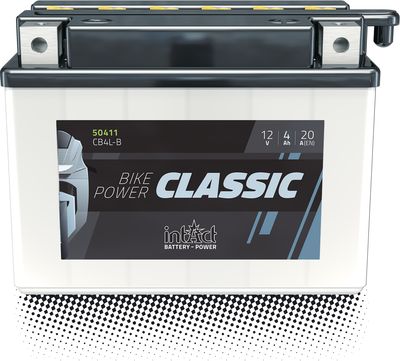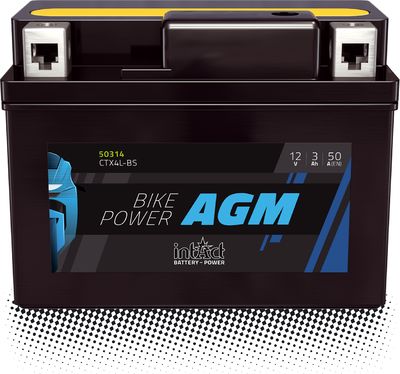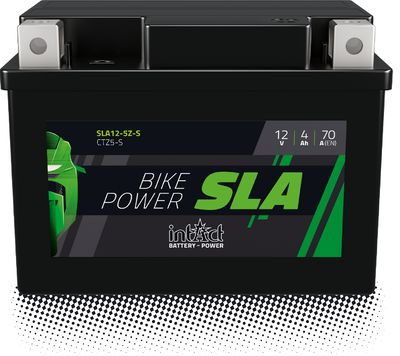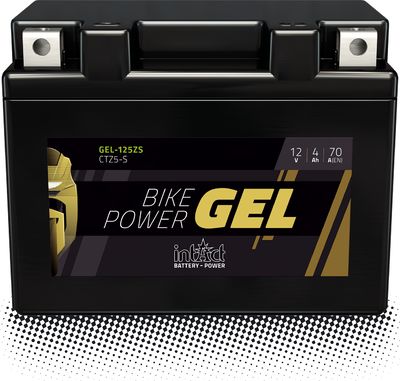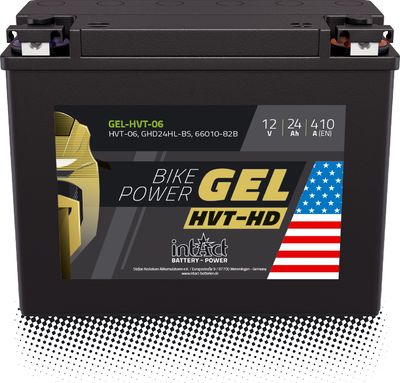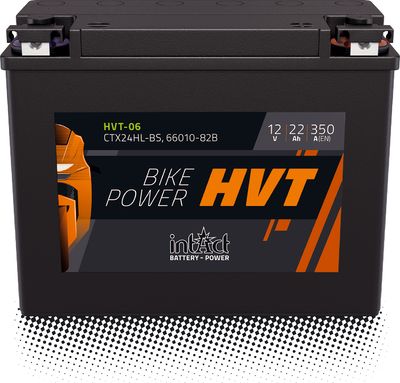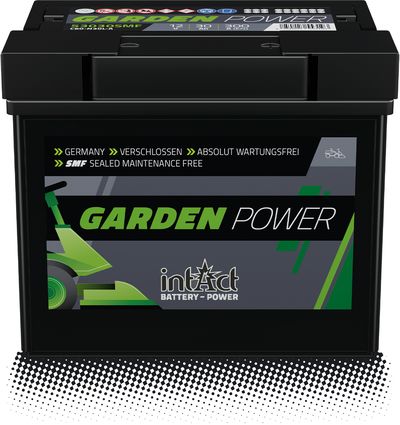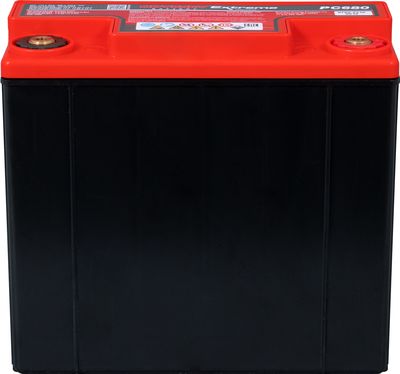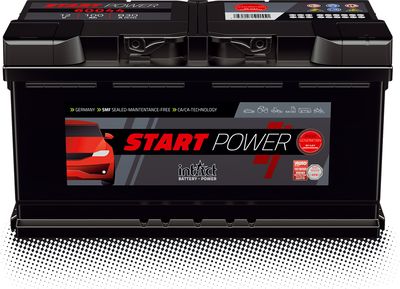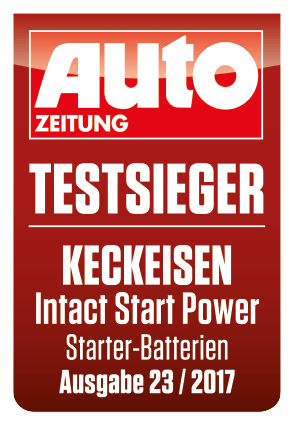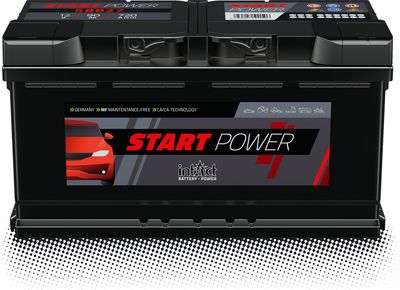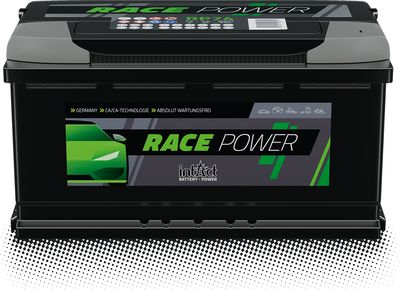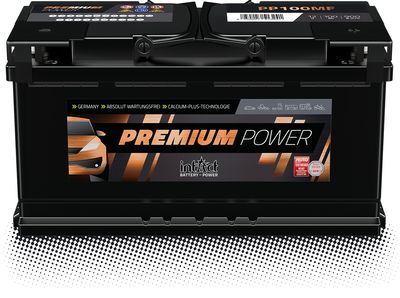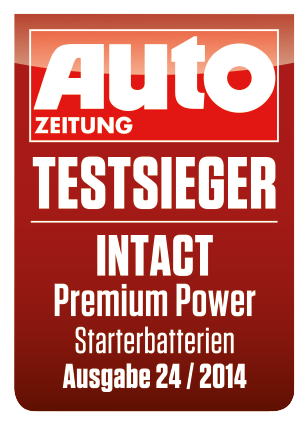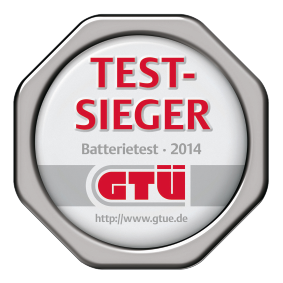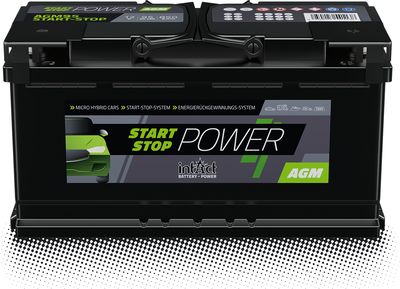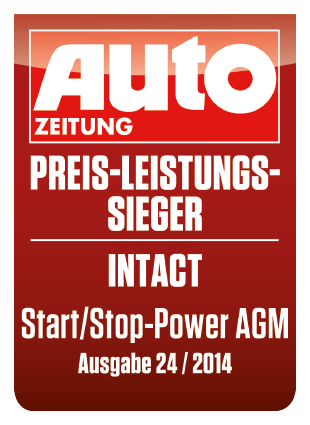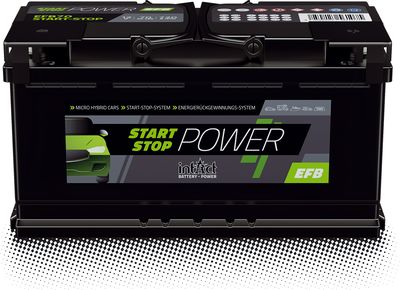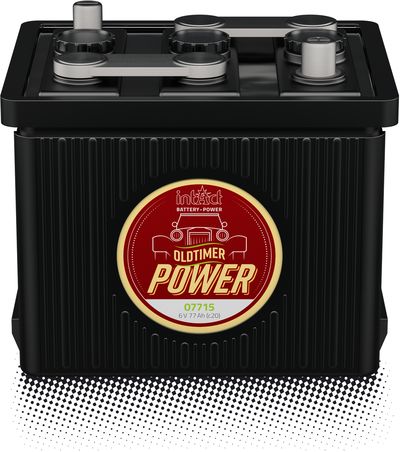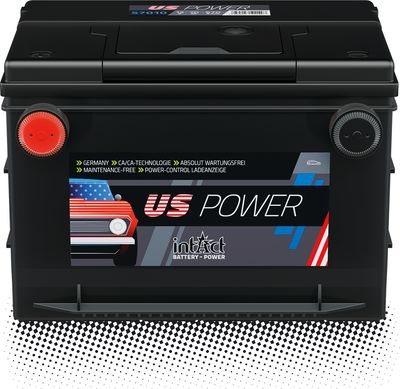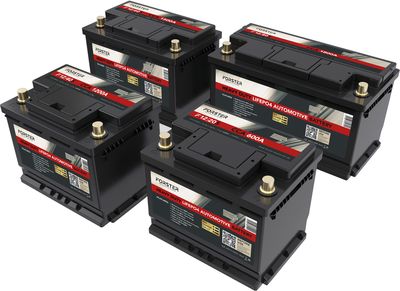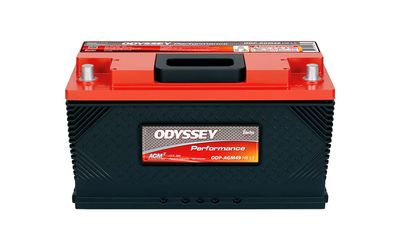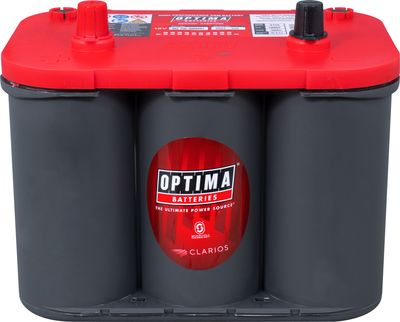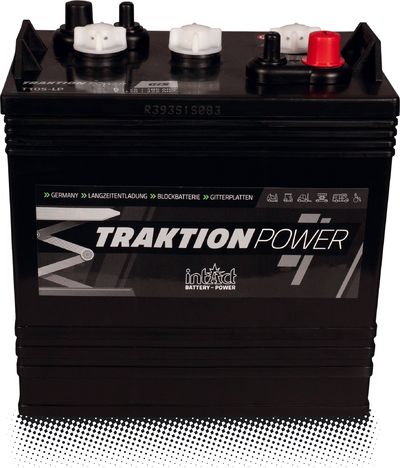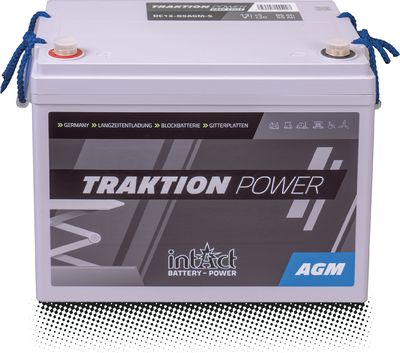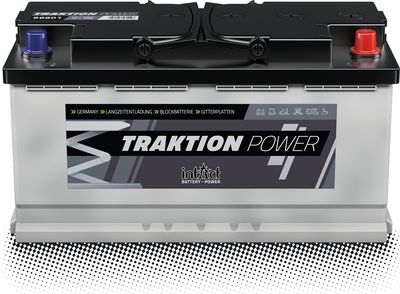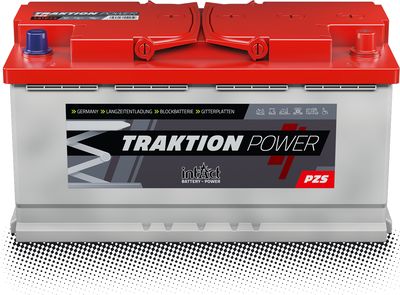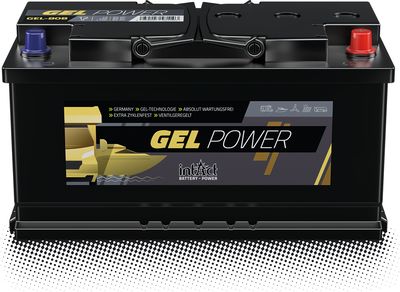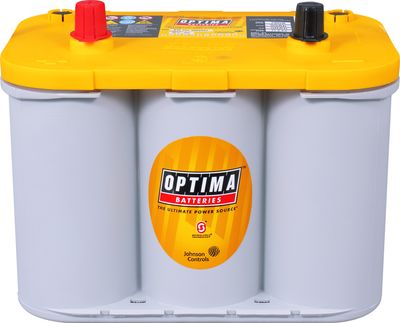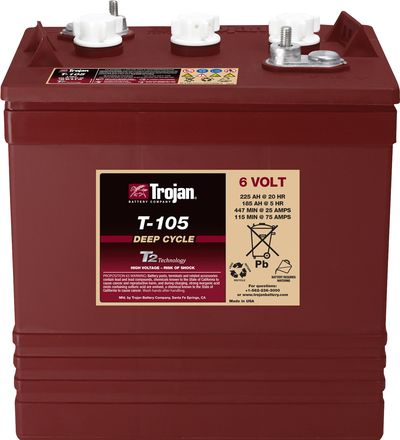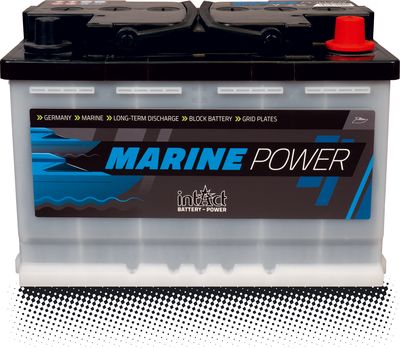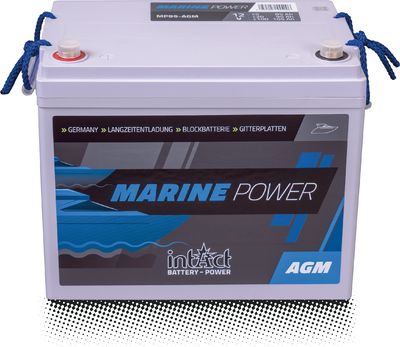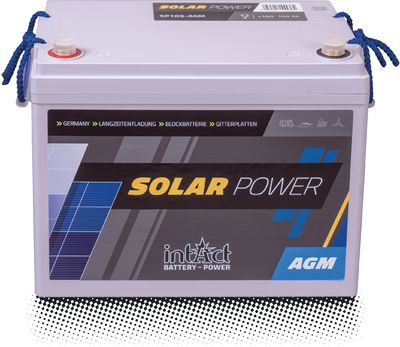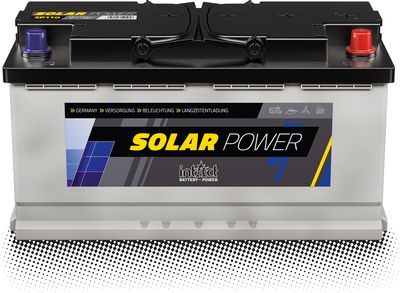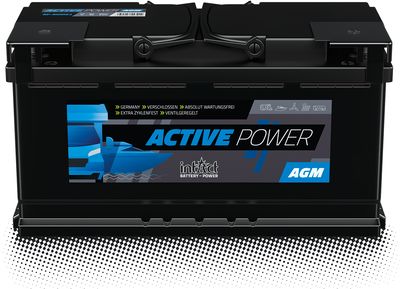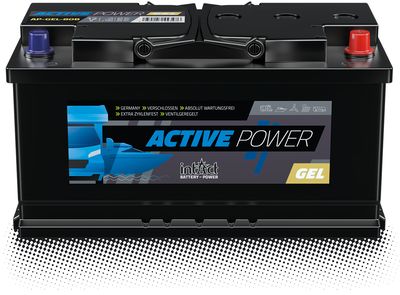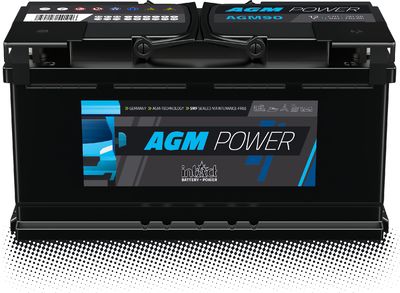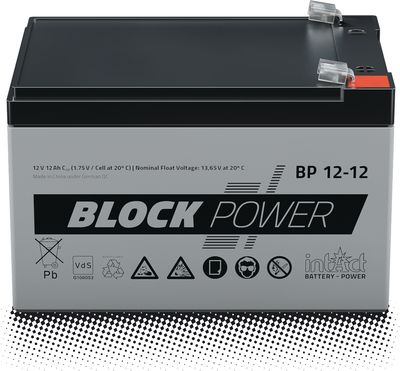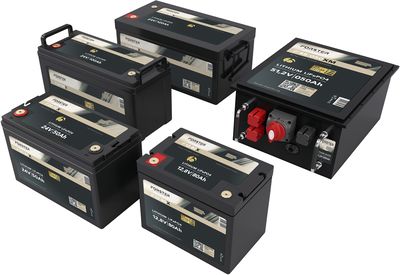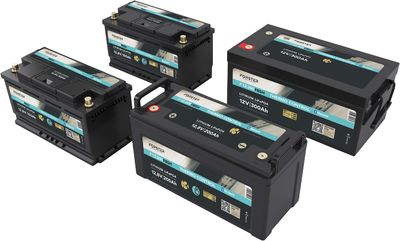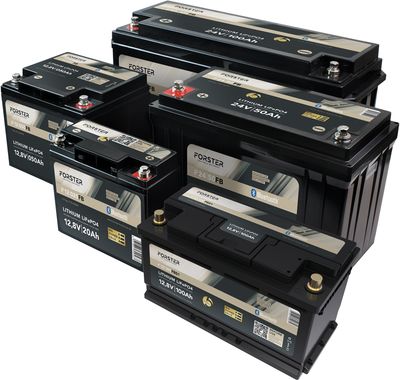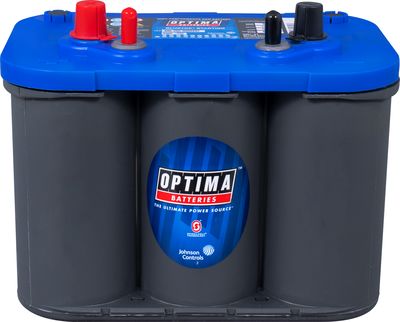
BATTERY SLUDGE
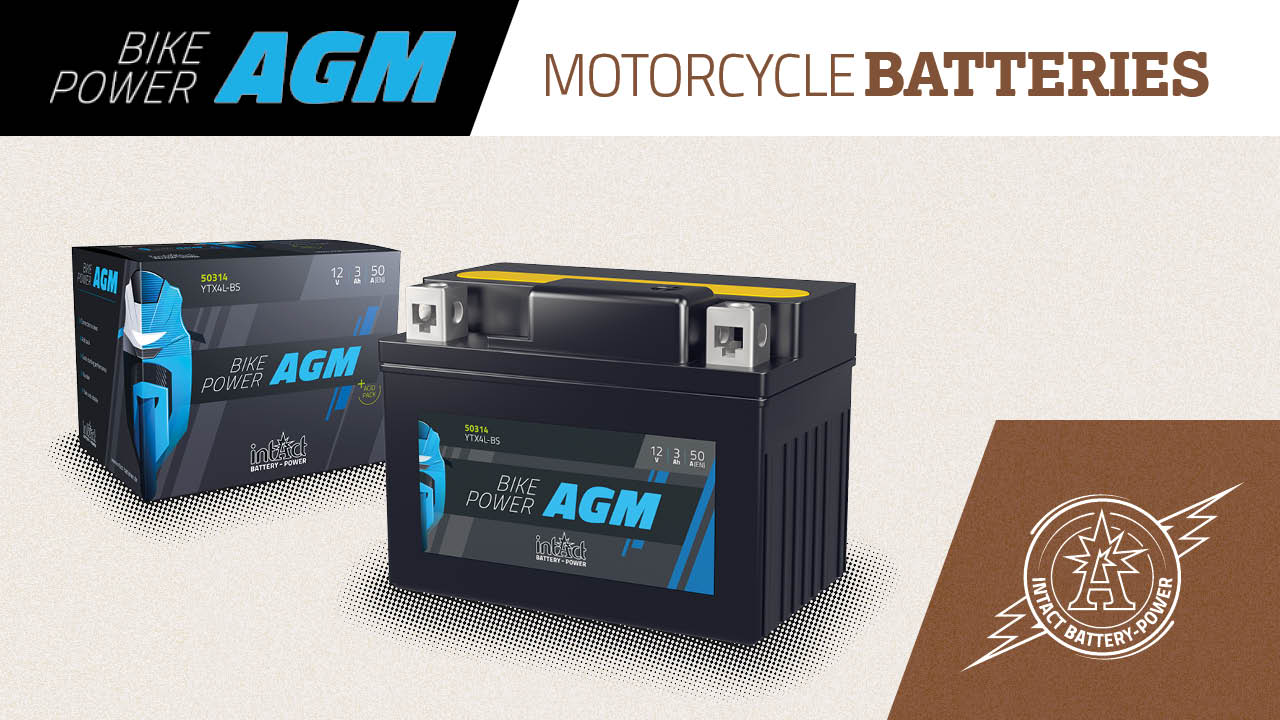
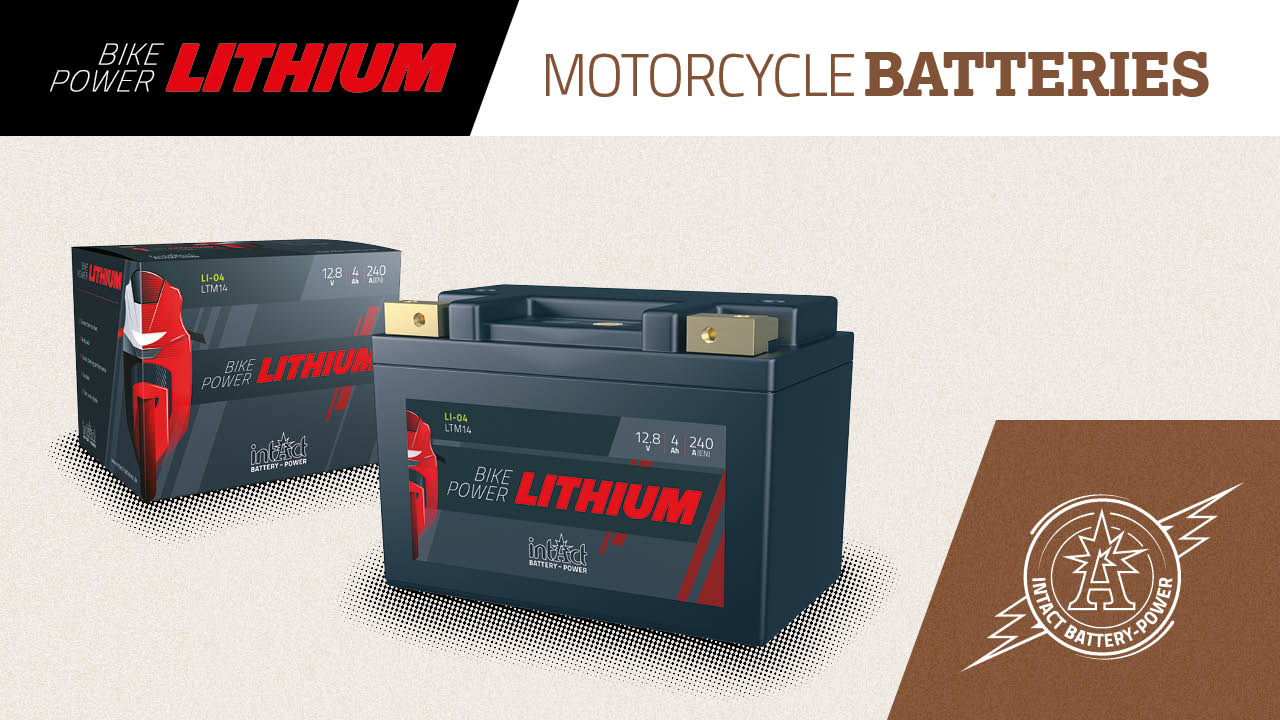
Motorcycle
Starter
Traction
Supply
Charger
TechnologyTips & TricksProductsExplain please
Technology
What is an AGM battery?
If you want a high cold start performance, the AGM is the starter battery of choice. Why the structure of the AGM also has an effect on the service life of a battery and for which applications the AGM is not suitable, you can find out here.WHAT IS A GEL BATTERY?
Supply or drive applications have very different battery requirements than starter applications. GEL batteries were developed for such cyclical applications. But the battery, in which the electrolyte is thickened to a gel-like consistency by the addition of silica, can do even more.WHAT IS A WET BATTERY?
The wet battery is the original variant of the lead-acid battery. All other AGM and GEL technologies are based on it. The basic principle remains the same: A box, lead plates coated with positive and negative material, sulfuric acid as electrolyte, which provides the chemical reaction. Proven, but not obsolete.WHAT IS THE DIFFERENCE BETWEEN A LITHIUM BATTERY AND CONVENTIONAL LEAD-ACID BATTERIES?
Like the lead-acid battery, the lithium battery is actually an accumulator, i.e. a rechargeable battery. This is where the similarities end. The structure is completely different. The best thing to do is to watch the video.Tips & Tricks
Do you really not need to maintain a maintenance-free battery?
WHEN DO I NEED TO RECHARGE A BATTERY?
WHAT SIZE MAKES SENSE?
HOW DO YOU DETERMINE THE DIMENSIONS OF A BATTERY?
What influence does temperature have on batteries?
HOW TO LOAD CORRECTLY?
HOW DO YOU RECOGNIZE A DEFECTIVE BATTERY?
Products
intAct Active-Power AGM
intAct Active-Power GEL
intAct AGM-Power
intAct BackUp-Power
intAct BackUp PowerIntAct Bike-Power AGM
IntAct Bike-Power AGMIntAct Bike-Power Classic
IntAct Bike-Power ClassicIntAct Bike-Power GEL
IntAct Bike-Power GELIntAct Bike-Power HVT
IntAct Bike-Power HVTIntact Bike-Power Lithium
Intact Bike-Power LithiumintAct Bike-Power SLA
intAct Bike-Power SLAintAct Block-Power
intAct GEL-Power
intAct US-Power
intAct US PowerintAct Traktion-Power PzS
intAct Traction Power PzSintAct Traktion-Power
intact Start-Stop-Power EFB
IntAct Oldtimer-Power
intact premium-power
intact premium-powerintAct Race-Power
intAct Race-PowerintAct Solar-Power
intact start-power
intact start-powerintact Start-Power NG
intact start powerintAct Start-Stop-Power AGM
intAct Start.Stop-Power AGMintAct Lithium-Power
intAct Traktion-Power PzS
intAct Traction Power PzSintAct GEL-Power
intAct Battery-Guard - Installation and Function of the App
Explain please
ABSOLUTELY MAINTENANCE-FREE
The term "Absolutely Maintenance Free" is used to describe a class of batteries that are completely sealed, valved and cannot be opened. Such batteries are leak-proof and can be installed at an angle. They are designed from the battery technology in such a way that they lose almost no water and therefore do not need to be refilled.ABSOLUTELY MAINTENANCE-FREE
CONNECTION POL
By terminal, we mean the positive and negative terminals of a battery. If both poles of the battery are connected to an electronic load, current flows between them. The position and type of the poles should match the vehicle. Examples of poles/connection terminals on batteries are: Round poles, flat poles, threaded poles ...CONNECTION POL
RECHARGING
Recharging is the reversal of the chemical process that takes place during the generation of electricity or during discharging. Strictly speaking, rechargeable batteries are called accumulators or secondary batteries.RECHARGING
LEAK PROOF
Leak-proof batteries are batteries that are completely sealed and equipped with valves. GEL batteries and AGM batteries are sealed at the factory. They can be installed at an angle. Spill-proof batteries are mandatory for boats, for example, so that no battery fluid can escape if the boat capsizes.LEAK PROOF
BALANCING
Lithium batteries have a battery management system. Here, an electronic circuit, the balancer or equalizer, ensures that the charge is distributed evenly. In this way, the total capacity of the battery is used in the best possible way and at the same time the individual cells are protected from overcharging.BALANCING
BATTERY BOX
Battery box is the name given to the outer casing of a battery. Classic wet batteries often come in a white or transparent case so you can easily check the fluid level. Some cases have a bottom bar to keep them securely in place. There are different standards for case sizes.BATTERY BOX
BATTERY CARE
Battery care is the term we use to describe all the measures we recommend to counteract the ageing process of a battery. These include: correct commissioning, regular checking of the state of charge, charging at sensible intervals, and cleaning the terminals and the battery. Some batteries may also require maintenance, such as checking the acid level or topping up with distilled water.BATTERY CARE
BATTERY SLUDGE
Battery sludge is an undesirable aging process in which the tiny pieces of active material that come off during each charge cycle settle to the bottom of a battery. If the battery sludge reaches the plate, a short circuit can occur and the cell becomes unusable. This is also called plate shorting or cell shorting.BATTERY SLUDGE
BATTERY WATER
Battery water, or more precisely distilled water, is used to refill classic lead-acid batteries that lose fluid. Distilled water is used so as not to alter the composition of the electrolyte. Unsuitable water would destroy the electrodes within a very short time and thus render the battery unusable.BATTERY WATER
LEAD SULFATE
Lead sulphate is formed in lead-acid batteries during discharge from sulphuric acid and lead. As a rule, the lead sulphate is converted again when the battery is charged. If too much lead sulphate is produced, the battery sulphates and becomes unusable.LEAD SULFATE
Continuous discharge test
The continuous discharge test or capacity test is a procedure in which a battery is loaded with a constant current up to a certain point. In this way, the existing capacity is determined in ampere-hours.Continuous discharge test
DOUBLE LID WITH LABYRINTH
The double lid with labyrinth is a special lid of a battery where water vapour produced condenses in the labyrinth of the lid and is returned to the battery.DOUBLE LID WITH LABYRINTH
ELECTROLYSE
Electrolyte is the chemical process that generates electrical current in a battery.ELECTROLYSE
ELEKTROLYTE
Electrolyte is a necessary component in conventional lead-acid batteries. Diluted sulphuric acid, which is electrically conductive due to the ions it contains. This can also be changed by various additives: e.g. in a GEL battery, the acid is bound in a gel-like manner by the addition of silica.ELEKTROLYTE
DEGASING
Any gases that arise escape via vent holes in the battery plugs or are discharged via a vent hose.DEGASING
DISCHARGE VOLTAGE
The final discharge voltage, also called final voltage, final discharge voltage, or maximum depth of discharge, is a value in volts set by the manufacturer to which a rechargeable battery can be discharged without affecting its service life. If you discharge the battery any further (deep discharge), you risk damaging it.DISCHARGE VOLTAGE
DISCHARGE DIAGRAM
Depth of discharge, or degree of discharge, indicates the degree to which a battery is discharged. Usually, the manufacturer specifies a maximum depth of discharge in percent to which the battery can be discharged without negatively affecting its service life.DISCHARGE DIAGRAM
FILL HEIGHT
The filling level of a battery can be found on the outside of the white or transparent housing of a wet battery as markings which indicate how high the battery may be filled with liquid at least (MIN) and at most (MAX).FILL HEIGHT
GAS RECOMBINATION
Gas recombination is a process in which most of the gas produced in batteries is reliquefied and returned to the chemical cycle. Small amounts of excess gas are vented via central degassing or via a valve to avoid overpressure. Gas recombination is the prerequisite for maintenance-free batteries.GAS RECOMBINATION
FIBERGLASS FLEECE
The glass fibre fleece is a material that separators in batteries are made of. In AGM batteries, the glass fibre fleece binds the electrolyte.FIBERGLASS FLEECE
EQUAL CURRENT
Direct current is an electric current that always runs in the same direction with constant strength. A battery always supplies direct current. It is a DC voltage source, i.e. it does not change its polarity. In contrast, a voltage source with changing polarity supplies alternating current.EQUAL CURRENT
HVT
HVT (Harley V-Twin) is a battery class for the special demands of Harley-Davidson motorcycles. In order to start reliably under continuous load from the hard vibrations of Harleys and other high-displacement 2-cylinders, the HVT is extremely resistant. The plate packs are highly compressed by special separator pockets. In addition, they are clamped precisely in the robust and impact-resistant housing.HVT
HYDROMETER
The hydrometer or also called acid lifter is a measuring device for determining the density of liquids. In the case of batteries, the density of the electrolyte can be used to determine their state of charge. Electronic hydrometers or mechanical acid lifters with floats are used for this purpose.HYDROMETER
INTELLIGENT CHARGER
The intelligent charger, monitors the state of charge of a lead-acid battery and adjusts the charge accordingly. Intelligent chargers can also stay on the battery for a long time without the risk of overcharging it. Lithium batteries require special chargers.INTELLIGENT CHARGER
COLD START POWER
The cold start power defines the value in amperes that a new, fully charged battery must deliver at minus 18 C for a certain duration before the voltage becomes too low. The cold start power provides information as to whether a battery also provides the necessary power in winter, when the electrochemical processes run more slowly.COLD START POWER
CAPACITY
Capacity is the amount of current that a fully charged battery can deliver. Capacity is measured in ampere-hours (Ah) and tells you how many hours (h) a battery can supply current at a certain level (amps/A). Therefore, the greater the consumption and the longer the vehicle or device is to be operated before it is recharged, the higher the Ah capacity of the battery must be.This is particularly important for traction batteries or supply batteries.CAPACITY
CARBON ADDITIVES
Carbon additives are an addition of carbon to the lead alloy of the electrodes. This increases the starting performance and cycle stability of a wet battery, both of which are used, for example, in the EFB battery.CARBON ADDITIVES
CONSTANT SHOP
Constant charging - or also called continuous charging or trickle charging. The low, constant charging of a fully charged battery to compensate for self-discharge. This ensures that the battery is fully charged at all times. This is particularly important for batteries that are on constant standby, e.g. to fill in when other power sources fail.CONSTANT SHOP
CONSTANT CURRENT DISCHARGE
Constant current discharging is the process of discharging a battery with a constant current.CONSTANT CURRENT DISCHARGE
CHARGE STATUS
The state of charge defines the degree to which a battery is charged. A full battery therefore has a state of charge of 100%.CHARGE STATUS
MEMORYEFFECT
The memory effect is the loss of capacity that occurs when batteries are recharged after a short discharge. There is no memory effect with lead batteries. Starter batteries in particular are discharged only slightly during normal operation before being recharged by the alternator while driving.MEMORYEFFECT
NEGATIVE
Negative (-) also called minus or negative terminal. One of the two poles of a battery. The other is the positive terminal. The cap on the negative terminal, the negative terminal and the negative cable are usually black. For current to flow, both the negative and positive terminals must be connected to a load.NEGATIVE
PLATE
Plate or battery plate is the name given to the combination of current collector (often in grid form) and chemically active material in a battery. Depending on the shape and material of the current collector, different battery characteristics result. Depending on the shape of the current collector, the plate is also called a large surface plate, grid plate, armored plate, tube plate, or box plate. Several plates of the same polarity connected together form a negative (-) or positive (+) plate set.PLATE
PLATE PACKAGE
A plate pack or plate block is the combination of a positive and a negative plate set and the separators in between. Provided with electrolyte, this results in a cell in a battery.PLATE PACKAGE
PLATE
A combination of several plates of the same polarity by means of a pole bridge is called a plate set. A negative plate set plus a positive plate set plus separators form a plate pack.PLATE
POLARITY
Polarity or also called switching defines the arrangement of the two poles of a battery.POLARITY
POLBRIDGE
The pole bridge is a component in the battery that connects several plates of the same polarity to form a set of plates.POLBRIDGE
POSITIVE
POSITIVE (+) or positive terminal is one of the two terminals of a battery. The other is the negative terminal. The cap on the positive terminal, the positive terminal and the positive cable are usually red. For current to flow, both the negative and positive terminals must be connected to a load.POSITIVE
PRIMARY BATTERY
Primary battery is the name given to a battery that cannot be recharged.PRIMARY BATTERY
SHIFT
A circuit is the arrangement of the positive and negative terminals of a battery. The circuit must be suitable for the respective vehicle type.SHIFT
Series-parallel connection
Series-parallel connection is an arrangement of batteries in which some cells are connected in series to increase the total voltage and some are connected in parallel to increase the total capacity.Series-parallel connection
SAFETY RESERVE
Safety reserve defines the ability of a battery to start even when it is low on charge.SAFETY RESERVE
SECURITY
The fuse is a circuit breaker or other interrupting device in a circuit. When the current exceeds a certain value, it interrupts the circuit to protect it from short circuits or power surges.SECURITY
STATIONARY BATTERY
The use of batteries at a fixed location is called stationary. Stationary batteries include, for example, batteries that are used as temporary storage for solar or wind power systems or supply smaller stand-alone systems, such as in a hut, with electricity. Another application is as a standby or backup battery in safety-related systems such as UPS systems.STATIONARY BATTERY
TEMPERATURE SHUTDOWN
Temperature shutdown a function of battery management systems that regulates the temperature in modern batteries to prevent damage and increase life.TEMPERATURE SHUTDOWN
REVERSE POLARITY
Reverse polarity is the unintended change or reversal of the normal polarity of a battery, which usually occurs when battery cables or charging cables are connected incorrectly.REVERSE POLARITY
UNWANTED RESISTANCE
Unwanted resistance is caused by aging processes, e.g. corrosion, or inaccurate manufacturing in a battery, which leads to unwanted voltage loss.UNWANTED RESISTANCE
UNINTERRUPTIBLE POWER SUPPLY
Uninterruptible power supply is the name given to a battery-powered system that provides standby power when the main power supply is interrupted.UNINTERRUPTIBLE POWER SUPPLY
CONSUMER
Electrical consumer. Components or devices that draw their energy from the power grid.CONSUMER
SEALED BATTERY
A sealed battery or SLA battery (Sealed Lead Acid) is a battery that cannot be opened and is sealed watertight and absolutely leak-proof. Sealed, particularly leak-proof batteries are suitable, for example, for watercraft, off-road vehicles, lawn mowers and garden machinery, construction vehicles ...SEALED BATTERY
VOLTMETER
A voltmeter is a device used to measure the voltage in a circuit or to measure the open circuit voltage of a battery. The open circuit voltage provides information about the state of charge of a battery.VOLTMETER
LOW-MAINTENANCE
Low maintenance is the term used for a conventional wet battery that requires regular servicing, at least before the winter break.This involves checking the fluid level and refilling it with distilled water if necessary.LOW-MAINTENANCE
MAINTENANCE FREE
Maintenance-free is a battery that does not need to be topped up with battery water under normal operating conditions and cannot be opened. Not to be confused with a sealed, absolutely maintenance-free battery.MAINTENANCE FREE
WATT
Watt is the unit of measurement for electrical power. W = Ampere x VoltWATT
WATT-HOUR
Watt-hour is the unit of measurement for electrical energy. Watt-hour = Watt x hours.WATT-HOUR
Resistance
An electrically resistive device used in an electrical circuit for current control and efficient operation.Resistance
Technology
What is an AGM battery?
If you want a high cold start performance, the AGM is the starter battery of choice. Why the structure of the AGM also has an effect on the service life of a battery and for which applications the AGM is not suitable, you can find out here.WHAT IS A GEL BATTERY?
Supply or drive applications have very different battery requirements than starter applications. GEL batteries were developed for such cyclical applications. But the battery, in which the electrolyte is thickened to a gel-like consistency by the addition of silica, can do even more.WHAT IS A WET BATTERY?
The wet battery is the original variant of the lead-acid battery. All other AGM and GEL technologies are based on it. The basic principle remains the same: A box, lead plates coated with positive and negative material, sulfuric acid as electrolyte, which provides the chemical reaction. Proven, but not obsolete.WHAT IS THE DIFFERENCE BETWEEN A LITHIUM BATTERY AND CONVENTIONAL LEAD-ACID BATTERIES?
Like the lead-acid battery, the lithium battery is actually an accumulator, i.e. a rechargeable battery. This is where the similarities end. The structure is completely different. The best thing to do is to watch the video.Tips & Tricks
Do you really not need to maintain a maintenance-free battery?
WHEN DO I NEED TO RECHARGE A BATTERY?
WHAT SIZE MAKES SENSE?
HOW DO YOU DETERMINE THE DIMENSIONS OF A BATTERY?
What influence does temperature have on batteries?
HOW TO LOAD CORRECTLY?
HOW DO YOU RECOGNIZE A DEFECTIVE BATTERY?
Products
intAct Active-Power AGM
intAct Active-Power GEL
intAct AGM-Power
intAct BackUp-Power
intAct BackUp PowerIntAct Bike-Power AGM
IntAct Bike-Power AGMIntAct Bike-Power Classic
IntAct Bike-Power ClassicIntAct Bike-Power GEL
IntAct Bike-Power GELIntAct Bike-Power HVT
IntAct Bike-Power HVTIntact Bike-Power Lithium
Intact Bike-Power LithiumintAct Bike-Power SLA
intAct Bike-Power SLAintAct Block-Power
intAct GEL-Power
intAct US-Power
intAct US PowerintAct Traktion-Power PzS
intAct Traction Power PzSintAct Traktion-Power
intact Start-Stop-Power EFB
IntAct Oldtimer-Power
intact premium-power
intact premium-powerintAct Race-Power
intAct Race-PowerintAct Solar-Power
intact start-power
intact start-powerintact Start-Power NG
intact start powerintAct Start-Stop-Power AGM
intAct Start.Stop-Power AGMintAct Lithium-Power
intAct Traktion-Power PzS
intAct Traction Power PzSintAct GEL-Power
intAct Battery-Guard - Installation and Function of the App
Explain please
ABSOLUTELY MAINTENANCE-FREE
The term "Absolutely Maintenance Free" is used to describe a class of batteries that are completely sealed, valved and cannot be opened. Such batteries are leak-proof and can be installed at an angle. They are designed from the battery technology in such a way that they lose almost no water and therefore do not need to be refilled.ABSOLUTELY MAINTENANCE-FREE
CONNECTION POL
By terminal, we mean the positive and negative terminals of a battery. If both poles of the battery are connected to an electronic load, current flows between them. The position and type of the poles should match the vehicle. Examples of poles/connection terminals on batteries are: Round poles, flat poles, threaded poles ...CONNECTION POL
RECHARGING
Recharging is the reversal of the chemical process that takes place during the generation of electricity or during discharging. Strictly speaking, rechargeable batteries are called accumulators or secondary batteries.RECHARGING
LEAK PROOF
Leak-proof batteries are batteries that are completely sealed and equipped with valves. GEL batteries and AGM batteries are sealed at the factory. They can be installed at an angle. Spill-proof batteries are mandatory for boats, for example, so that no battery fluid can escape if the boat capsizes.LEAK PROOF
BALANCING
Lithium batteries have a battery management system. Here, an electronic circuit, the balancer or equalizer, ensures that the charge is distributed evenly. In this way, the total capacity of the battery is used in the best possible way and at the same time the individual cells are protected from overcharging.BALANCING
BATTERY BOX
Battery box is the name given to the outer casing of a battery. Classic wet batteries often come in a white or transparent case so you can easily check the fluid level. Some cases have a bottom bar to keep them securely in place. There are different standards for case sizes.BATTERY BOX
BATTERY CARE
Battery care is the term we use to describe all the measures we recommend to counteract the ageing process of a battery. These include: correct commissioning, regular checking of the state of charge, charging at sensible intervals, and cleaning the terminals and the battery. Some batteries may also require maintenance, such as checking the acid level or topping up with distilled water.BATTERY CARE
BATTERY SLUDGE
Battery sludge is an undesirable aging process in which the tiny pieces of active material that come off during each charge cycle settle to the bottom of a battery. If the battery sludge reaches the plate, a short circuit can occur and the cell becomes unusable. This is also called plate shorting or cell shorting.BATTERY SLUDGE
BATTERY WATER
Battery water, or more precisely distilled water, is used to refill classic lead-acid batteries that lose fluid. Distilled water is used so as not to alter the composition of the electrolyte. Unsuitable water would destroy the electrodes within a very short time and thus render the battery unusable.BATTERY WATER
LEAD SULFATE
Lead sulphate is formed in lead-acid batteries during discharge from sulphuric acid and lead. As a rule, the lead sulphate is converted again when the battery is charged. If too much lead sulphate is produced, the battery sulphates and becomes unusable.LEAD SULFATE
Continuous discharge test
The continuous discharge test or capacity test is a procedure in which a battery is loaded with a constant current up to a certain point. In this way, the existing capacity is determined in ampere-hours.Continuous discharge test
DOUBLE LID WITH LABYRINTH
The double lid with labyrinth is a special lid of a battery where water vapour produced condenses in the labyrinth of the lid and is returned to the battery.DOUBLE LID WITH LABYRINTH
ELECTROLYSE
Electrolyte is the chemical process that generates electrical current in a battery.ELECTROLYSE
ELEKTROLYTE
Electrolyte is a necessary component in conventional lead-acid batteries. Diluted sulphuric acid, which is electrically conductive due to the ions it contains. This can also be changed by various additives: e.g. in a GEL battery, the acid is bound in a gel-like manner by the addition of silica.ELEKTROLYTE
DEGASING
Any gases that arise escape via vent holes in the battery plugs or are discharged via a vent hose.DEGASING
DISCHARGE VOLTAGE
The final discharge voltage, also called final voltage, final discharge voltage, or maximum depth of discharge, is a value in volts set by the manufacturer to which a rechargeable battery can be discharged without affecting its service life. If you discharge the battery any further (deep discharge), you risk damaging it.DISCHARGE VOLTAGE
DISCHARGE DIAGRAM
Depth of discharge, or degree of discharge, indicates the degree to which a battery is discharged. Usually, the manufacturer specifies a maximum depth of discharge in percent to which the battery can be discharged without negatively affecting its service life.DISCHARGE DIAGRAM
FILL HEIGHT
The filling level of a battery can be found on the outside of the white or transparent housing of a wet battery as markings which indicate how high the battery may be filled with liquid at least (MIN) and at most (MAX).FILL HEIGHT
GAS RECOMBINATION
Gas recombination is a process in which most of the gas produced in batteries is reliquefied and returned to the chemical cycle. Small amounts of excess gas are vented via central degassing or via a valve to avoid overpressure. Gas recombination is the prerequisite for maintenance-free batteries.GAS RECOMBINATION
FIBERGLASS FLEECE
The glass fibre fleece is a material that separators in batteries are made of. In AGM batteries, the glass fibre fleece binds the electrolyte.FIBERGLASS FLEECE
EQUAL CURRENT
Direct current is an electric current that always runs in the same direction with constant strength. A battery always supplies direct current. It is a DC voltage source, i.e. it does not change its polarity. In contrast, a voltage source with changing polarity supplies alternating current.EQUAL CURRENT
HVT
HVT (Harley V-Twin) is a battery class for the special demands of Harley-Davidson motorcycles. In order to start reliably under continuous load from the hard vibrations of Harleys and other high-displacement 2-cylinders, the HVT is extremely resistant. The plate packs are highly compressed by special separator pockets. In addition, they are clamped precisely in the robust and impact-resistant housing.HVT
HYDROMETER
The hydrometer or also called acid lifter is a measuring device for determining the density of liquids. In the case of batteries, the density of the electrolyte can be used to determine their state of charge. Electronic hydrometers or mechanical acid lifters with floats are used for this purpose.HYDROMETER
INTELLIGENT CHARGER
The intelligent charger, monitors the state of charge of a lead-acid battery and adjusts the charge accordingly. Intelligent chargers can also stay on the battery for a long time without the risk of overcharging it. Lithium batteries require special chargers.INTELLIGENT CHARGER
COLD START POWER
The cold start power defines the value in amperes that a new, fully charged battery must deliver at minus 18 C for a certain duration before the voltage becomes too low. The cold start power provides information as to whether a battery also provides the necessary power in winter, when the electrochemical processes run more slowly.COLD START POWER
CAPACITY
Capacity is the amount of current that a fully charged battery can deliver. Capacity is measured in ampere-hours (Ah) and tells you how many hours (h) a battery can supply current at a certain level (amps/A). Therefore, the greater the consumption and the longer the vehicle or device is to be operated before it is recharged, the higher the Ah capacity of the battery must be.This is particularly important for traction batteries or supply batteries.CAPACITY
CARBON ADDITIVES
Carbon additives are an addition of carbon to the lead alloy of the electrodes. This increases the starting performance and cycle stability of a wet battery, both of which are used, for example, in the EFB battery.CARBON ADDITIVES
CONSTANT SHOP
Constant charging - or also called continuous charging or trickle charging. The low, constant charging of a fully charged battery to compensate for self-discharge. This ensures that the battery is fully charged at all times. This is particularly important for batteries that are on constant standby, e.g. to fill in when other power sources fail.CONSTANT SHOP
CONSTANT CURRENT DISCHARGE
Constant current discharging is the process of discharging a battery with a constant current.CONSTANT CURRENT DISCHARGE
CHARGE STATUS
The state of charge defines the degree to which a battery is charged. A full battery therefore has a state of charge of 100%.CHARGE STATUS
MEMORYEFFECT
The memory effect is the loss of capacity that occurs when batteries are recharged after a short discharge. There is no memory effect with lead batteries. Starter batteries in particular are discharged only slightly during normal operation before being recharged by the alternator while driving.MEMORYEFFECT
NEGATIVE
Negative (-) also called minus or negative terminal. One of the two poles of a battery. The other is the positive terminal. The cap on the negative terminal, the negative terminal and the negative cable are usually black. For current to flow, both the negative and positive terminals must be connected to a load.NEGATIVE
PLATE
Plate or battery plate is the name given to the combination of current collector (often in grid form) and chemically active material in a battery. Depending on the shape and material of the current collector, different battery characteristics result. Depending on the shape of the current collector, the plate is also called a large surface plate, grid plate, armored plate, tube plate, or box plate. Several plates of the same polarity connected together form a negative (-) or positive (+) plate set.PLATE
PLATE PACKAGE
A plate pack or plate block is the combination of a positive and a negative plate set and the separators in between. Provided with electrolyte, this results in a cell in a battery.PLATE PACKAGE
PLATE
A combination of several plates of the same polarity by means of a pole bridge is called a plate set. A negative plate set plus a positive plate set plus separators form a plate pack.PLATE
POLARITY
Polarity or also called switching defines the arrangement of the two poles of a battery.POLARITY
POLBRIDGE
The pole bridge is a component in the battery that connects several plates of the same polarity to form a set of plates.POLBRIDGE
POSITIVE
POSITIVE (+) or positive terminal is one of the two terminals of a battery. The other is the negative terminal. The cap on the positive terminal, the positive terminal and the positive cable are usually red. For current to flow, both the negative and positive terminals must be connected to a load.POSITIVE
PRIMARY BATTERY
Primary battery is the name given to a battery that cannot be recharged.PRIMARY BATTERY
SHIFT
A circuit is the arrangement of the positive and negative terminals of a battery. The circuit must be suitable for the respective vehicle type.SHIFT
Series-parallel connection
Series-parallel connection is an arrangement of batteries in which some cells are connected in series to increase the total voltage and some are connected in parallel to increase the total capacity.Series-parallel connection
SAFETY RESERVE
Safety reserve defines the ability of a battery to start even when it is low on charge.SAFETY RESERVE
SECURITY
The fuse is a circuit breaker or other interrupting device in a circuit. When the current exceeds a certain value, it interrupts the circuit to protect it from short circuits or power surges.SECURITY
STATIONARY BATTERY
The use of batteries at a fixed location is called stationary. Stationary batteries include, for example, batteries that are used as temporary storage for solar or wind power systems or supply smaller stand-alone systems, such as in a hut, with electricity. Another application is as a standby or backup battery in safety-related systems such as UPS systems.STATIONARY BATTERY
TEMPERATURE SHUTDOWN
Temperature shutdown a function of battery management systems that regulates the temperature in modern batteries to prevent damage and increase life.TEMPERATURE SHUTDOWN
REVERSE POLARITY
Reverse polarity is the unintended change or reversal of the normal polarity of a battery, which usually occurs when battery cables or charging cables are connected incorrectly.REVERSE POLARITY
UNWANTED RESISTANCE
Unwanted resistance is caused by aging processes, e.g. corrosion, or inaccurate manufacturing in a battery, which leads to unwanted voltage loss.UNWANTED RESISTANCE
UNINTERRUPTIBLE POWER SUPPLY
Uninterruptible power supply is the name given to a battery-powered system that provides standby power when the main power supply is interrupted.UNINTERRUPTIBLE POWER SUPPLY
CONSUMER
Electrical consumer. Components or devices that draw their energy from the power grid.CONSUMER
SEALED BATTERY
A sealed battery or SLA battery (Sealed Lead Acid) is a battery that cannot be opened and is sealed watertight and absolutely leak-proof. Sealed, particularly leak-proof batteries are suitable, for example, for watercraft, off-road vehicles, lawn mowers and garden machinery, construction vehicles ...SEALED BATTERY
VOLTMETER
A voltmeter is a device used to measure the voltage in a circuit or to measure the open circuit voltage of a battery. The open circuit voltage provides information about the state of charge of a battery.VOLTMETER
LOW-MAINTENANCE
Low maintenance is the term used for a conventional wet battery that requires regular servicing, at least before the winter break.This involves checking the fluid level and refilling it with distilled water if necessary.LOW-MAINTENANCE
MAINTENANCE FREE
Maintenance-free is a battery that does not need to be topped up with battery water under normal operating conditions and cannot be opened. Not to be confused with a sealed, absolutely maintenance-free battery.MAINTENANCE FREE
WATT
Watt is the unit of measurement for electrical power. W = Ampere x VoltWATT
WATT-HOUR
Watt-hour is the unit of measurement for electrical energy. Watt-hour = Watt x hours.WATT-HOUR
Resistance
An electrically resistive device used in an electrical circuit for current control and efficient operation.Resistance
